All surfaces are smooth. The acceleration of mass m relative to wedge is
 Solution in Telugu
Solution in Telugu
gsinθ
gsinθ+acosθ
gsinθ−acosθ
acosθ
The correct Answer is:B
Step by step video & image solution for All surfaces are smooth. The acceleration of mass m relative to wedge is by Physics experts to help you in doubts & scoring excellent marks in Class 11 exams.
Updated on:21/07/2023Topper's Solved these Questions
- NEWTONS LAWS OF MOTION BOOK - AAKASH SERIESCHAPTER - NEWTONS LAWS OF MOTION EXERCISE - LECTURE SHEET (EXERCISE - IV) ( More than one correct answer Type Questions)
1 Videos
- NEWTONS LAWS OF MOTION BOOK - AAKASH SERIESCHAPTER - NEWTONS LAWS OF MOTION EXERCISE - LECTURE SHEET (EXERCISE - V) (Straight Objective Type Questions)
6 Videos
- NEWTONS LAWS OF MOTION BOOK - AAKASH SERIESCHAPTER - NEWTONS LAWS OF MOTION EXERCISE - LECTURE SHEET (EXERCISE - III) ( Matrix Matching Type Questions)
2 Videos
- MOTION IN A STRAIGHT LINEBOOK - AAKASH SERIESCHAPTER - MOTION IN A STRAIGHT LINEEXERCISE - Questions for Descriptive Answers
7 Videos
- OSCILLATIONBOOK - AAKASH SERIESCHAPTER - OSCILLATIONEXERCISE - QUESTIONS FOR DESCRIPTIVE ANSWERS
12 Videos
Similar Questions
Find the minimum acceleration of the wedge, so that the block is under free fall (assume all surfaces tivate v are smooth).

View SolutionA disc of mass 5 kg is kept floating horizontally in mid air by firing 10 bullets per second vertically up. If the mass of each bullet is 50 gm and bullets rebound with same speed, the speed of each bullet is, (g = 10ms−2)
View SolutionIn the arrangement shown, all string are light and inextensible, pulley is light and smooth. Given W3=300N . match the list in column-l to that in column-ll, when the system is in equilibrium

View SolutionThree tortoises are located at the vertices of an equilateral triangle whose side equals a They all start moving simultaneously with velocity v constant in modulus with the first tortoise heading continually for the second , the second for the third and the third for the first . They will meet after time
View SolutionThe spring shown in figure is unstretched when a man starts pulling on the cord. The mass of the block is M. If the man exerts a constant force F, find the amplitude and the time period of the motion of the block.

View SolutionIn the arrangement shown in figure, the rod of mass m held by two smooth walls, remains always perpendicular to the surface of the wedge of mass M. Assuming all the surface to be frictionless, find the acceleration of the rod and that of the wedge.

View SolutionIn fig. mass m is being pulled on the incline of a wedge of mass M. All the surfaces are smooth. Find the acceleration of the wedge.
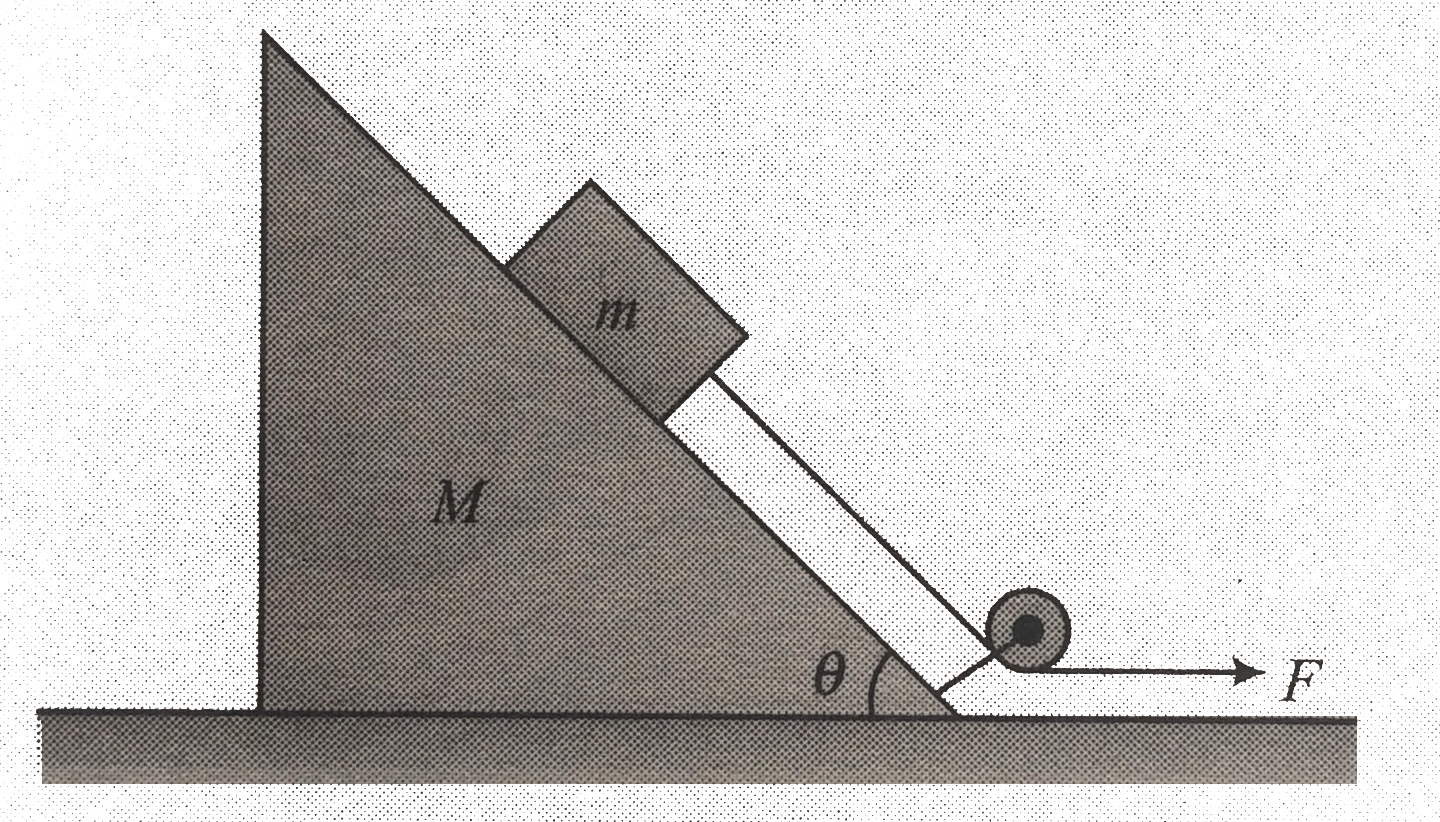
View SolutionAll surfaces are smooth The acceleration of mass m relative to the wedge is
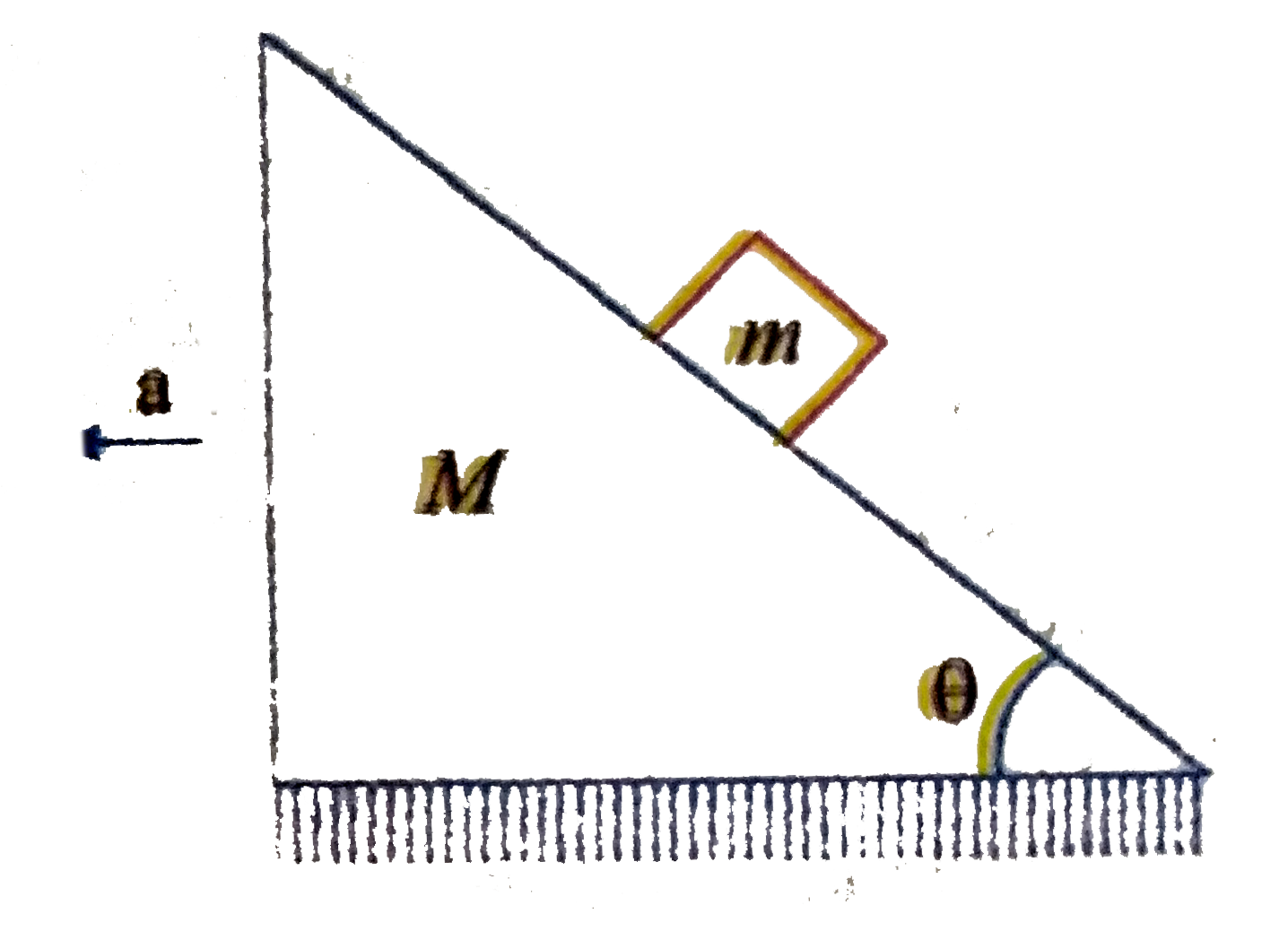 .
.
View SolutionIn the Fig. shown, mass 'm' is being pulled on the incline of a wedge of mass M. All the surface are smooth. Find the acceleration of the wedge.
View SolutionIn the arrangement shown in figure wedge of mass M moves towards left with an acceleration a. All surfaces are smooth. The acceleration of mass m relative to wedge is
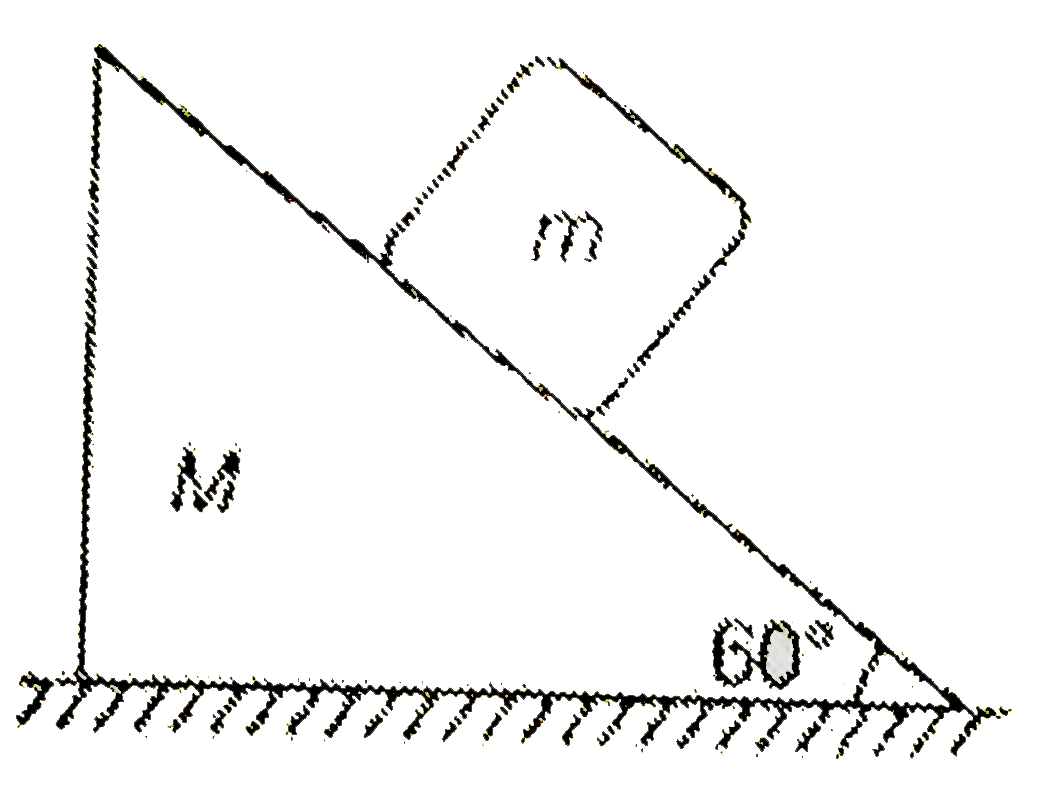
View SolutionAll the surfaces are smooth as shown in figure. The acceleration of mass m relative to wedge is :
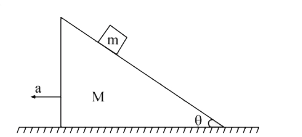
View SolutionA block of mass m placed on the inclined surface of wedge of mass M. Block is clamped between two smooth vertical support such that it can move along vertical If all contact surface are smooth then acceleration of wedge is:
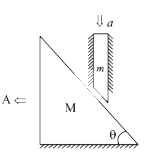
View SolutionAll surfaces are smooth. The acceleration of mass m relative to the wedge is
View SolutionAll surfaces are smooth. The acceleration of mass m relative to wedge is:

View SolutionA block of mass 'm' is placed on wedge of mass 'M'. If all the surfaces are smooth

Accelaration of wedge 'A' is
View Solution
